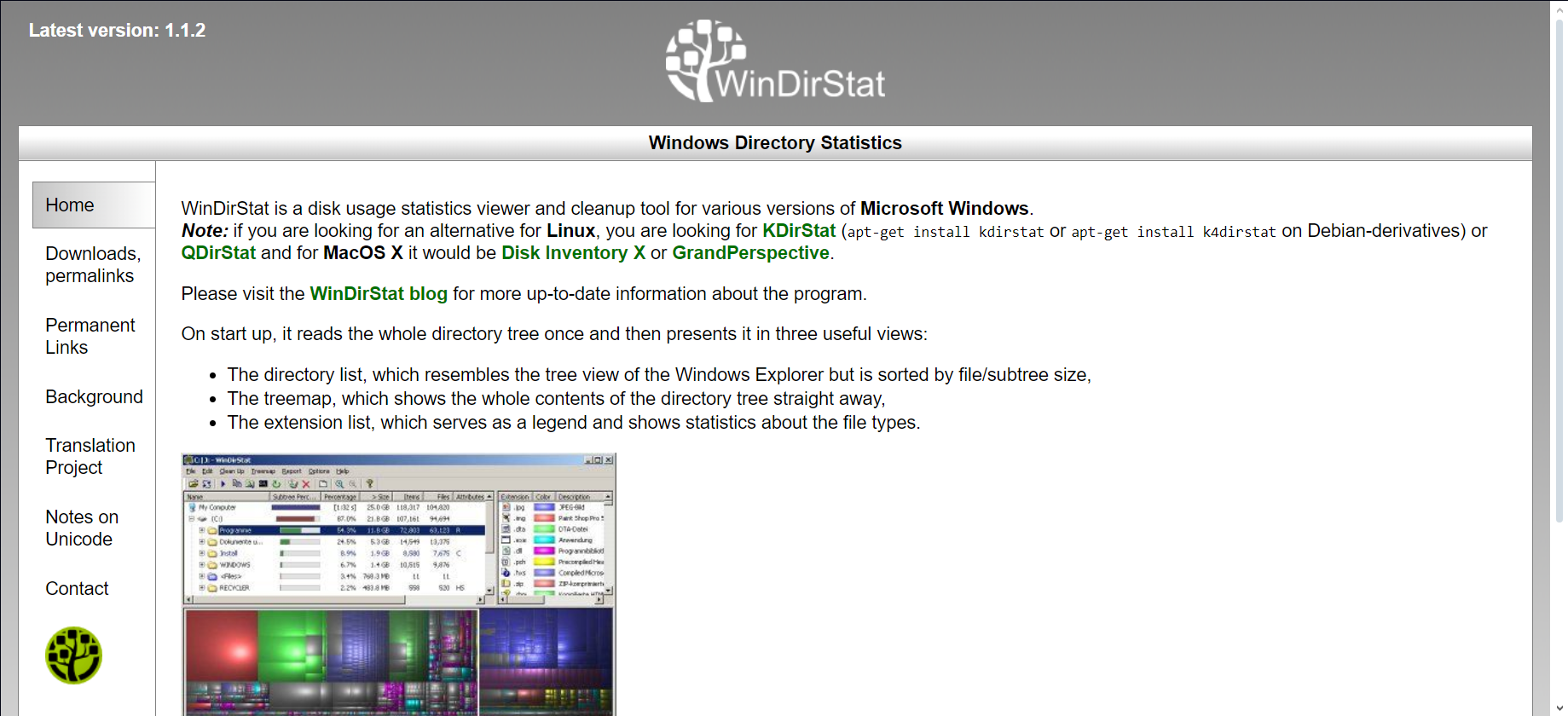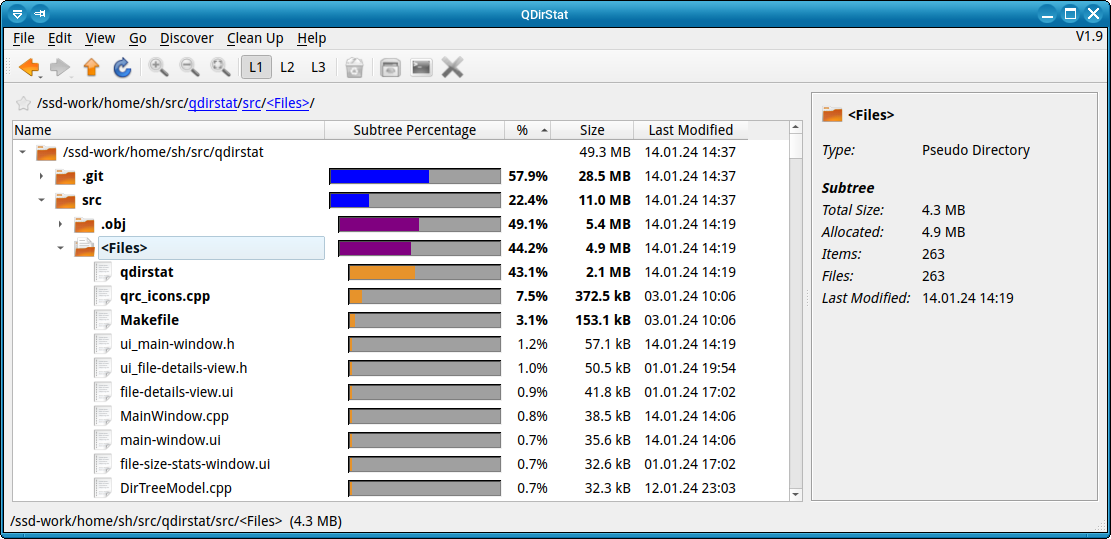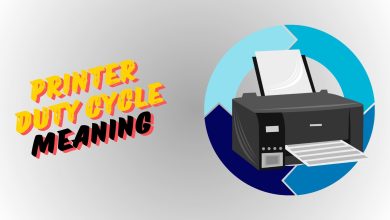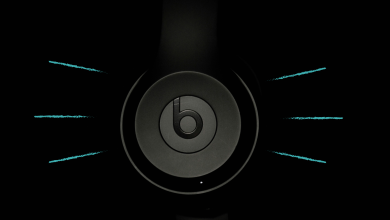The 7 Best WinDirStat Alternatives to Try for Disk Usage
WinDirStat is a comprehensive disk usage statistics viewer and cleanup tool for Windows users. Inspired by KDirStat, a similar tool for KDE environments, WinDirStat offers a detailed visualization of storage space utilization on a device. It breaks down the file and folder structure into a spontaneous, color-coded treemap, allowing users to quickly identify which files occupy the most space.

As a cleanup tool, WinDirStat identifies unnecessary files that can be deleted to free up disk space. It includes features such as the ability to explore directory trees, delete files directly from its interface, and view file types by percentage of disk usage, enhancing user control over data management.
Initially designed for Windows, WinDirStat’s compatibility focuses on this operating system, making it an excellent tool for users seeking to manage and optimize their disk space on Windows platforms effectively.
Top WinDirStat Alternatives
Here are some top alternatives to WinDirStat that offer improved features, faster performance, and compatibility with various operating systems. Let’s explore these powerful tools:
1. WizTree

WizTree stands out primarily for its exceptional speed in scanning drives. This rapid performance is attributable to its direct access to the NTFS Master File Table (MFT). This approach allows it to identify the largest files almost immediately, which is particularly useful for users managing large volumes of data.
WizTree shows which files and folders use the most disk space and offers a visual treemap display for better data visualization and management. The tool’s integration with Windows allows users to quickly open file locations, delete unnecessary files directly from the interface, and view properties without leaving the application.
WizTree’s ability to handle large datasets efficiently makes it an excellent tool for system administrators and professionals in data-intensive fields who require quick insights into disk usage.
↪ Key Features:
- High-speed scanning, often considered the fastest tool of its kind.
- Visual treemap interface for easy data navigation.
- Allows users to find and manage large files efficiently.
- A portable version is available, which doesn’t require installation.
2. TreeSize

TreeSize is a versatile tool that integrates deeply with Windows, offering its services directly from the context menu of any folder or drive. This easy access allows users to analyze disk usage without additional menus.
TreeSize is known for its thorough scanning capability that covers not just local drives but also network and cloud storage, providing a comprehensive view of disk usage across different environments. In addition to basic disk usage statistics, TreeSize provides detailed insights into file ages, sizes, and types, helping users optimize storage systematically.
The professional version extends functionalities, including scanning scheduling and detailed reporting, essential for maintaining corporate networks. Its user-friendly interface and the ability to export data in various formats make TreeSize a valuable tool for casual users and IT professionals.
↪ Key Features:
- Supports multiple file systems, including NTFS, FAT, FAT32, and network drives.
- Detailed reports can be exported in various formats, such as Excel, PDF, or HTML.
- Visualizations include bar charts, pie charts, and a treemap.
3. JDiskReport

JDiskReport offers a detailed examination of disk space utilization by presenting data through intuitive charts and graphs, such as pie charts and bar graphs. This Java-based tool scans disks and presents a breakdown of how space is consumed by different file types, sizes, and ages, making it easier to identify potential areas for cleanup.
JDiskReport’s ability to analyze trends over time can assist users in identifying growing files or directories that might require attention. Because JDiskReport runs on Java, it maintains cross-platform compatibility, which benefits environments using multiple operating systems.
It requires a Java runtime environment, which could be a drawback for users who do not wish to install additional software. JDiskReport remains a powerful tool for those who need detailed analytical capabilities and the ability to track disk usage over time.
↪ Key Features:
- Provides a variety of visual representations, including pie charts, bar charts, and lists.
- Analyzes disk space usage by file type, size, and age.
- Offers detailed information on disk usage patterns over time.
- Completely free to use.
4. SpaceSniffer

SpaceSniffer takes a unique approach to visualizing disk space through a “tagged” treemap that updates in real-time as the scan progresses. This visualization helps users see the impact of deletions and file additions, offering an interactive experience that can aid in immediate disk management decisions.
Its interface allows users to zoom in on specific directories and get detailed information about individual files, which is beneficial for quickly identifying space. One of SpaceSniffer’s key features is its portability, allowing it to be used on different computers without needing installation.
Its ability to filter results according to file size, modification date, and other criteria makes it a flexible tool for managing disk space efficiently. SpaceSniffer’s intuitive layout and real-time scanning capability make it a preferred choice for users who value interactive and visual tools for disk management.
↪ Key Features:
- Real-time scanning provides an interactive and animated display.
- Tagged visualization helps quickly identify the largest elements.
- Filters allow users to sort and view data by criteria such as file size or modified date.
- A portable application that runs without installation.
5. QDirStat (for Linux)

QDirStat is a graphical disk usage utility that visualizes disk usage with detailed treemaps and directory tree views. Originating as a successor to KDirStat without KDE dependencies, QDirStat offers a platform-independent way to analyze disk space on Linux systems.
Users can view disk usage statistics and manage disk space by visually identifying large files and folders. The tool provides a scriptable cleanup configuration, making it possible to automate some disk-cleaning tasks directly from within the application.
QDirStat’s capability to break down disk usage by file type and directory size helps users quickly pinpoint where disk space is most heavily utilized. This can be particularly useful in environments where disk space management is crucial, such as in server setups or extensive data centers.
↪ Key Features:
- Offers an interactive and animated display of file system usage.
- Tagged visualization aids in quickly identifying the largest elements on the disk.
- Allows sorting and viewing files by criteria such as file size, type, or last modified date.
- Integrated tools for deleting unnecessary files directly from the interface.
6. Disk Inventory X (for macOS)

Disk Inventory X is tailored for macOS users and stands out with its detailed graphical representation of disk usage through treemapping. This method helps users visually track down large files and folders that consume significant disk space.
The application scans the entire disk and presents color-coded results, making it easy to identify different types of files at a glance. This tool’s integration with macOS allows seamless navigation through files and folders directly from the app’s interface, enhancing user experience and efficiency in managing disk space.
Disk Inventory X’s ability to provide detailed information about file sizes and types helps users decide what to delete or archive, optimizing their storage.
↪ Key Features:
- Live updates provide an interactive view of disk usage.
- Each file type is color-coded, making it easy to identify different data types.
- Displays comprehensive file details, including size, type, and modification dates.
- Allows users to manage files using Mac’s Finder directly through the app.
7. DiskUsage (for Android)

DiskUsage provides a unique way to understand disk usage on Android devices by visualizing the file system as an interactive map. Each file and folder are represented as a rectangle, with sizes proportional to the disk space they occupy. This intuitive interface makes it easy for users to identify and manage large items that could remove valuable space on their mobile devices.
DiskUsage is particularly useful for Android users because it integrates well with the system, allowing for detailed inspections of apps and files directly from the device. Users can easily navigate through their files, see detailed information about each item, and uninstall apps directly from the interface.
↪ Key features:
- Integrates with Android to allow for direct app management and uninstallation from within the interface.
- Real-time scanning of storage with an animated, interactive map.
- It uses a visual tagging system to help users quickly find the largest files and apps.
- Users can sort and filter the display by file size, app size, or usage date.





